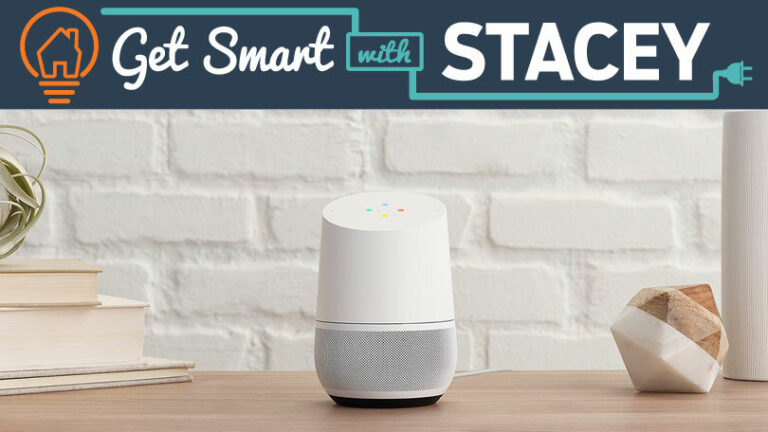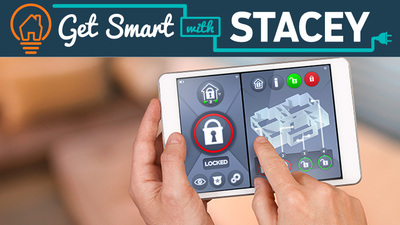
[ad_1]
The smart home is gaining ground, but it’s still a muddle of confusing standards, competing platforms, and gadgets that don’t do what you might expect. But the promise of products that can make your life a little easier is hard to resist, so I’m here to answer the inevitable questions that arise.
Whether it’s figuring out the best connected door lock to assembling the right recipe to wake you up with a faux sunrise at the optimal moment based on your fitness tracker’s data, I’ve got you covered. As the host of The Internet of Things Podcast(Opens in a new window), I install a lot of gear and spend hours testing hardware and software to see what works. Smart homes are still pretty dumb, but I want to help you feel smart.
If you have smart home questions you’d like me to answer, send an email to [email protected]. In this week’s column I’m answering questions I get often from everyone, so forgive the lack of names.
I have a Google Home connected to both a Hue Bridge and a SmartThings Hub. I have two Hue bulbs connected to the Bridge, individually named “Mike’s Light” and “Donna’s Light.” They are both associated with a room named “Bedroom.”
Google Home will turn on both lights if I say “Turn on Bedroom lights.” But, if I say “Turn on Mike’s Light” or Donna’s, it doesn’t recognize that. Interestingly, if I turn one on with the Hue or SmartThings app, then say “Turn on Bedroom lights,” it turns on the other bulb and references it correctly by name.
I can turn individual lights on/off with Siri.
I have totally reset and rebooted the Bridge and Hub and set it up a second time with the same results.
Any thoughts?
Thanks,
Mike S., Stamford, Connecticut
Oh the joys of voice interface! This is an area where those “natural” human interactions can bite you in the butt. You think you can use normal rules of language and grammar because this device understands you. But it’s still a computer with limitations. In this case, the limitation is likely in your naming.
The Amazon Echo and Google Home can get weird when you use punctuation, so avoid apostrophes and other “special” characters in names. Numbers are okay. You can also check to make sure the Google Home brought over the correct names from the Hue app.
The other (annoying) thing to think about is good naming hygiene for voice interfaces. I try very hard to use descriptive names for light bulbs I want to control individually. That way if I want to turn on the one bulb over my reading chair in the living room, I call it “reading chair light.” But if it’s a cluster of lights that will always perform as a cluster (and I’ve used individual bulbs) I use Master1, Master2, etc. Then the entire group is called Master.
I try to avoid calling it Master Bedroom because I also have a Guest Bedroom and my child’s bedroom in the house and more bedrooms makes things confusing for Siri, Echo, or the Google Home ($99.00 at Target)(Opens in a new window) .
The other good habit to get into is using the same names for a lighting grouping in your starter app and in the rooms available in Google Home, the Amazon Echo, and on your HomeKit app (be it the Home app in iOS or an outside app). In practice, this means if you have Hue lights and four of them are in a room called Dining, when you are offered the chance to create a room in Google Home or a group in the Amazon Echo app, call it Dining as well.
I also tend to create new groups in Google Home, HomeKit, or the Amazon Echo such as Downstairs, Outside, or All to let me control all of the lights in a particular grouping that makes sense for me.
Finally, don’t be surprised if you are sitting in your kitchen one day trying to turn off the dining room lights using voice, and you totally blank on what the right command is. The more commands and devices, the tougher it will be to keep them on the tip of your tongue.
Recommended by Our Editors

I just listened to your podcast with your husband and your daughter yesterday and you mentioned a new light switch you were going to review shortly or talk about in future podcasts. Could you provide more information; I just purchased a home, and I want to start retrofitting the light switches. I just bought the HomeSeer dimmer to try out and see how that fits in with SmartThings.
Also, most devices seem to have batteries. Have you found that to be a nuisance?
Thanks,
Alex B. Farmingville, NY.
Oooh, the HomeSeer controller actually looks really nice although is it Z-wave only? You really have so many options available to you because you can do a Wi-Fi, ZigBee, or a Z-wave option with SmartThings. As a bonus, sometime this month you can also add Lutron lights since Lutron announced a cloud-to-cloud SmartThings integration at CES. I haven’t tried it yet, though, so I don’t know how it will perform. But in general, I have found much happiness with my Lutron switches (roughly $65 per dimmer).
But you could also do Z-Wave. I recommend you steer clear of ZigBee for this because I haven’t yet found a ZigBee switch I love. Aeontec(Opens in a new window) and Fibaro(Opens in a new window) offer these $40 modules that fit inside your electrical box that will allow you to keep your switch, if you happen to like your switches. They come in on/off or dimming, so choose which one works for your light options. Or you can buy this really beautiful wall plate(Opens in a new window) if you choose the Aeontec module.
For traditional Z-wave switches, as opposed to the modules, you have a wide variety of options with traditional on/off or dimming capabilities. GE’s stuff is good. Leviton also has switches that work with SmartThings. If you aren’t married to it working with SmartThings, WeMo introduced a dimmer switch at CES that will be out in the March-April timeframe (the price isn’t set yet). SmartThings supports WeMo through a Labs feature, but it’s reliable.
For some of the crazier options, a company called Nuro Technologies(Opens in a new window) is trying to build a new light switch with ambient light detection, motion detection, and machine learning that will anticipate your lighting needs based on movements through your home, the ambient light, and your history. The goal with those switches is to never need to touch the switch again. They will be out later this year.
That’s enough potential vaporware, though. As for batteries, they can be a pain, but most apps tell me when they need replacing. And most of my sensors only need them once a year or so. Some are every two or even three years. The exception to that is the SmartThings presence sensor, which seemed to die every four months or so, but you can use other services like Life360, IFTTT, or others to link to your phone.
[ad_2]
Source link : https://www.pcmag.com/opinions/get-smart-with-stacey-when-gadgets-voice-commands-dont-play-nice

